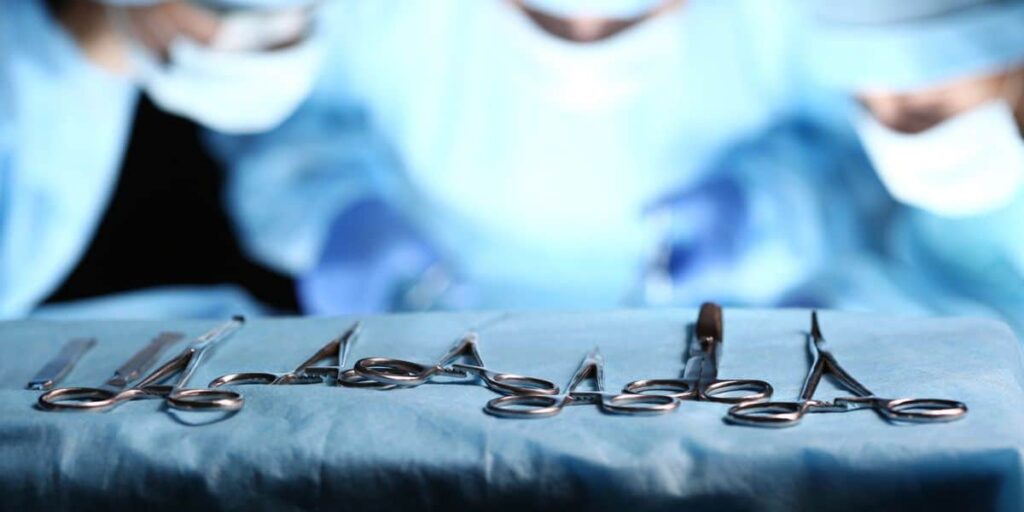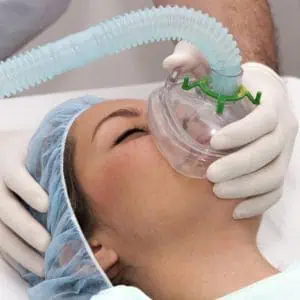Diagnostic laparoscopy is a minimally invasive surgical procedure that allows healthcare providers to view the inside of the abdomen and pelvis. This procedure is commonly used in gynecology to diagnose and evaluate conditions affecting the reproductive organs.
If you have been recommended for a diagnostic laparoscopy, it’s important to understand what the procedure involves, why it’s performed, how to prepare, and what to expect during recovery.
What is diagnostic laparoscopy?
Diagnostic laparoscopy is a surgical procedure that uses a small camera, called a laparoscope, to examine the organs inside the abdominal cavity and pelvis more closely.
Unlike traditional open surgery, which requires large incisions, this type uses small incisions. These small cuts are typically at most half an inch long. This technique allows for a less invasive approach, leading to faster recovery and reduced post-op pain.
The laparoscope is a thin, flexible tube with a light and a video camera. During the procedure, small incisions are made in the abdomen through which the laparoscope can be inserted to take current images of abdominal organs.
These images are displayed on a monitor, allowing your doctor to identify abnormalities, take tissue samples (biopsies), or perform minor surgical procedures if necessary.

Why Is diagnostic laparoscopy used?
Diagnostic laparoscopic surgery is essential for diagnosing and evaluating various gynecological concerns and medical conditions. Often, these conditions may not be detectable through non-invasive imaging methods like ultrasound, CT scans, or MRI.
It provides a direct view of the pelvic organs, making it particularly helpful in diagnosing the following conditions:
- Endometriosis: Diagnostic laparoscopy is the gold standard for diagnosing endometriosis, a condition where tissue similar to the lining of the uterus grows outside the uterus, causing pain and infertility.
- Pelvic adhesions: Scar tissue from previous surgeries or infections can cause organs to stick together, leading to pelvic and abdominal pain and discomfort. Laparoscopy can identify and potentially treat these adhesions.
- Ovarian cysts: Laparoscopy can help evaluate ovarian cysts, determining whether they are benign, malignant, or require further treatment.
- Pelvic pain: When other diagnostic tests fail to identify the cause of chronic pelvic pain, laparoscopy can provide valuable insights.
- Ectopic pregnancy: Laparoscopy is used to diagnose and treat ectopic pregnancies, where a fertilized egg implants outside the uterus, typically in a fallopian tube.
Diagnostic laparoscopy can also help treat or diagnose gastrointestinal conditions such as appendicitis, gallbladder concerns, fibroids, tumors, blockages of the intestine, and cancer.
How to prepare for a diagnostic laparoscopy
Although a diagnostic laparoscopy is not considered an invasive procedure, proper preparation can help things go smoother. Dr. Aliabadi will give you specific instructions based on your needs and the reason for the surgery.
General instructions can include:
- Fasting: You will likely be asked to refrain from eating or drinking anything for 8-12 hours before the procedure. This ensures an empty stomach, reducing the risk of complications during anesthesia.
- Medications: It’s important to tell Dr. Aliabadi about all your medications, supplements, and herbal products. You may need to stop taking certain medications, such as blood thinners or anti-inflammatory drugs, a few days before the surgery.
- Health conditions: If you have any chronic health conditions, such as diabetes or high blood pressure, special instructions may be given to manage these conditions before the procedure.
- Arrangements for after the procedure: Since diagnostic laparoscopy is typically performed under general anesthesia but is an outpatient procedure, you will need someone to drive you home after the procedure. Plan to have a friend or family member available to assist you.
What happens during a diagnostic laparoscopy?

Understanding what happens during the procedure can help ease any anxiety. Here’s what you can expect:
- Anesthesia: An anesthesiologist will place you under general anesthesia so you won’t feel anything during the procedure.
- Incisions: A small incision in the abdominal wall, near the belly button, will be made to insert the laparoscope. Additional small incisions may be made to insert surgical instruments.
- Insufflation: Your abdomen will be inflated with carbon dioxide gas to create a working space and improve visibility. This allows Dr. Aliabadi to move the laparoscope freely and get a clear view of the organs.
- Examination: She will carefully examine the pelvic organs, including the uterus, fallopian tubes, ovaries, and surrounding tissues. If necessary, tissue samples may be taken for biopsy, or minor surgical procedures may be performed to treat the condition immediately.
- Completion: Once the examination is complete, the instruments are removed, the gas is released, and the incisions are closed with sutures or surgical tape.
- Recovery room: You will be taken to a recovery room, where you will be monitored as you wake up from anesthesia.
Recovery after a laparoscopic procedure
Recovery from diagnostic laparoscopy is generally quicker and less painful than recovery from open surgery. However, following all post-operative instructions is important to ensure a smooth and safe recovery.
- Incision care: Keep the incision sites clean and dry. Instructions will be provided on how to care for the incisions and when to remove any dressings.
- Activity restrictions: You may be advised to avoid strenuous activities, heavy lifting, and sexual intercourse for a few weeks. Light activities like walking are encouraged to promote circulation and prevent blood clots.
- Pain management: Some discomfort, bloating, or shoulder pain (due to the gas used during the procedure) is normal. Over-the-counter pain relievers or prescribed medications can help manage these symptoms.
- Follow-up appointment: Attend your follow-up appointment to discuss the laparoscopy results and any further treatment or management plans.
Have questions about your health? Talk to Dr. Aliabadi
Dr. Aliabadi isn’t only an expert OB/GYN but is also knowledgeable in all aspects of women’s health and well-being. Dr. Aliabadi implements the most advanced technology and treatment options, specializing in up-to-date, minimally invasive surgical techniques like diagnostic laparoscopy. Dr. Aliabadi and her caring, supportive staff are available to support you through menopause, childbirth, infertility, or even just routine gynecological care.
We invite you to establish care with Dr. Aliabadi. Please make an appointment online or call us at (844) 863-6700.
The practice of Dr. Thais Aliabadi and the Outpatient Hysterectomy Center is conveniently located for patients throughout Southern California and the Los Angeles area. We are near Beverly Hills, West Hollywood, Santa Monica, West Los Angeles, Culver City, Hollywood, Venice, Marina del Rey, Malibu, Manhattan Beach, and Downtown Los Angeles.
Diagnostic laparoscopy usually takes about an hour. However, this can vary depending on the reason for the surgery, such as diagnosis, biopsy, or treatment.
Diagnostic laparoscopy often diagnoses suspected endometriosis or removes scarring and lesions. Endometriosis symptoms, like abdominal pain, may increase immediately after surgery. However, symptoms usually dissipate as your body continues to heal.
It can be normal to experience little to no bleeding after a laparoscopy. Alternatively, some individuals may experience vaginal bleeding for up to a week following the procedure.
Sources:
Role of Laparoscopy in Diagnosing and Treating Acute Nonspecific Abdominal Pain
https://www.ncbi.nlm.nih.gov/pmc/articles/PMC8589343
Why Diagnostic Laparoscopy
https://pubmed.ncbi.nlm.nih.gov/33949333
Diagnostic laparoscopy https://medlineplus.gov/ency/article/003918.htm#:~:text=Diagnostic%20laparoscopy%20is%20often%20done,if%20the%20cancer%20has%20spread.
















